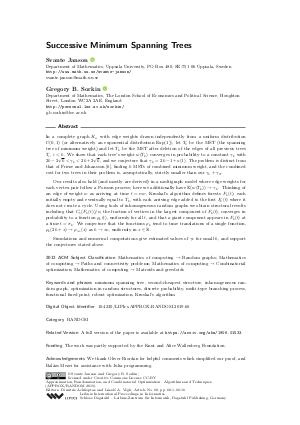LIPIcs.APPROX-RANDOM.2019.60.pdf
- Filesize: 0.57 MB
- 16 pages

 Creative Commons Attribution 3.0 Unported license
Creative Commons Attribution 3.0 Unported license



















Feedback for Dagstuhl Publishing